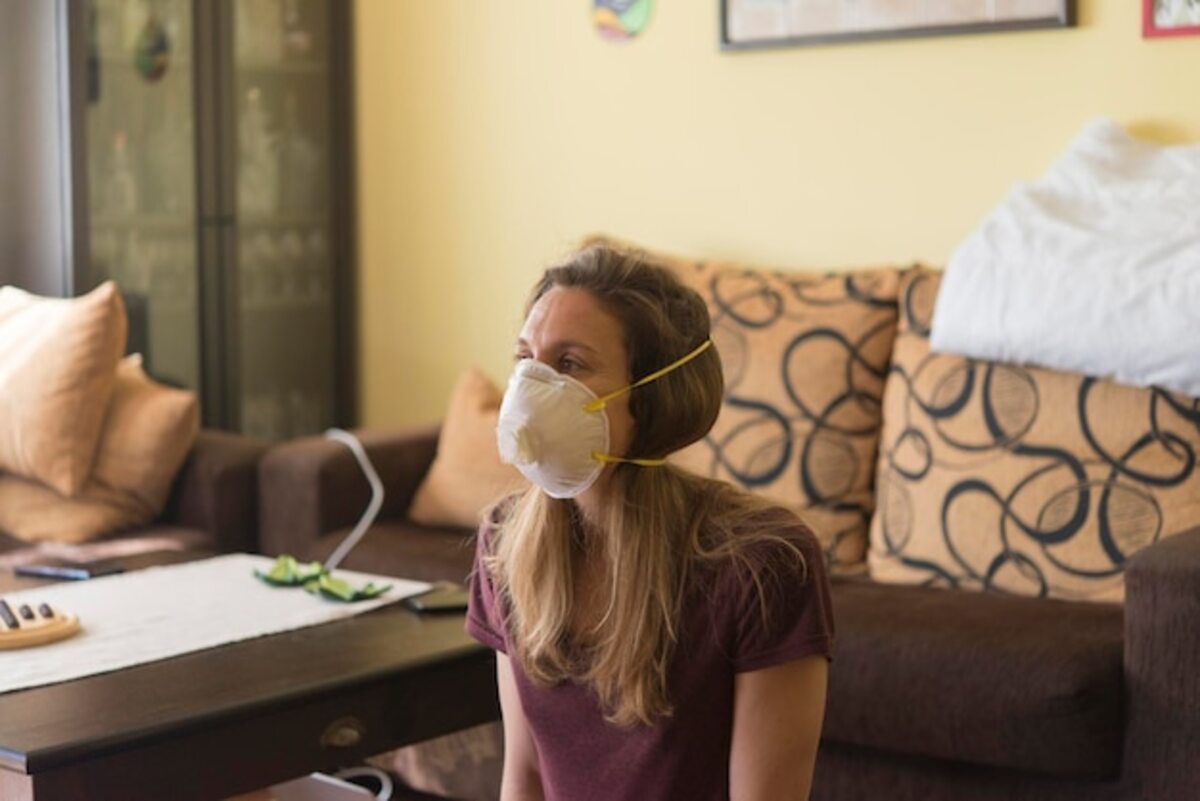Essential maintenance for an allergen-free home

Keeping a home free of allergens is essential to ensure the health and well-being of the entire family. In this article, I will provide you with basic maintenance tips that will transform your space into a safe and comfortable refuge. From proper cleaning to the choice of materials, every little detail matters. By implementing these practices, you will not only improve the air quality in your home but also reduce the risks associated with allergies and respiratory illnesses. Discover how to achieve this!
1. Understanding common household allergens
Understanding common household allergens is the first step to creating a healthy environment. Dust mites, pollen, mold, and pet dander are some of the most frequent allergens that can trigger allergic reactions in many people. These tiny organisms can be found in almost every corner of our home, from carpets to curtains and upholstered furniture. The accumulation of these allergens can be especially problematic in poorly ventilated spaces or areas with little natural light, where humidity promotes their proliferation.
In addition to identifying these allergens, it is crucial to understand how they interact with our daily environment. For example, pollen can enter through open windows during peak pollen season, while dust mites thrive in warm, humid environments. By maintaining proper hygiene and employing specific cleaning techniques, such as vacuum cleaners with HEPA filters and reducing clutter, we can significantly minimize exposure to these irritants. In this way, we take an active control over our respiratory health and overall well-being within the home.
2. The importance of good ventilation
Proper ventilation is a fundamental component in the fight against allergens in the home. A closed and poorly ventilated environment can accumulate particles like dust, pollen, mold, and mites, which are common triggers of allergies. By allowing fresh air to circulate through your space, you not only reduce the concentration of these allergens but also promote a healthy exchange of indoor and outdoor air. Opening windows and doors during the cooler hours of the day or using fans can be a simple solution to improve air quality.
Additionally, having mechanical ventilation systems or air purifiers can be a valuable investment for those who suffer from severe allergies. These devices help filter air pollutants and maintain a constant flow of clean air in the home. It is also important to regularly check the filters of these devices and change them according to the manufacturer's recommendations to ensure their effectiveness. Good ventilation not only creates a more comfortable space but also significantly contributes to the respiratory health of all family members.
3. Ideal frequency for cleaning key spaces
The frequency with which you clean key areas of your home can make a big difference in reducing allergens. For example, areas like the kitchen and the bathroom, where moisture can accumulate, should be cleaned at least once a week. This not only prevents the growth of mold and fungi but also helps eliminate food residues and other contaminants that can trigger allergies. Additionally, it is advisable to clean surfaces like countertops and faucets with appropriate disinfectants to ensure a healthy environment.
Bedrooms and living rooms, although they may seem less prone to accumulating allergens, also require regular attention. It is suggested to vacuum carpets and upholstery every two weeks and wash bed linens weekly in hot water to eliminate dust mites and other irritants. Additionally, it is important to rotate mattresses every three months to ensure even wear and minimize dust accumulation in these essential areas. By implementing these cleaning routines, you can enjoy a cleaner and healthier home for all members of your family.
4. Effective and safe cleaning products
To maintain an allergen-free home, it is essential to have cleaning products that are both effective and safe. Often, commercial cleaners are loaded with harsh chemicals that can irritate the respiratory system and contribute to the accumulation of allergens in the environment. Choosing natural alternatives, such as white vinegar, baking soda, and essential oils, not only helps to remove stains and odors but also creates a healthier environment for all family members. These products are less likely to cause allergic reactions and are eco-friendly.
In addition to choosing natural products, it is important to pay attention to labels and look for options that are certified as hypoallergenic or free from synthetic fragrances. Some brands offer specific cleaners designed to combat common allergens like dust, pollen, and mites. Regular cleaning with these products can help significantly reduce the amount of irritating particles in the air. Also remember to use appropriate tools, such as microfiber cloths and vacuums with HEPA filters, to maximize effectiveness in removing allergens while keeping a safe space for your family.
5. How to choose furniture that minimizes allergens
Choosing furniture that minimizes allergens is a crucial decision for creating a healthy home environment. When selecting furniture, opt for those made with hypoallergenic materials, such as solid wood or synthetic fabrics that do not accumulate dust or mites. Avoid wool or natural fiber rugs and upholstery, as they tend to trap particles and allergens inside. Instead, consider smooth and easy-to-clean surfaces, such as leather or microfiber, which can be disinfected more easily and do not retain as many contaminants.
Also, pay attention to the finishes of the furniture; look for products that use water-based paints and varnishes without volatile organic compounds (VOCs). These compounds can release harmful chemicals into the home atmosphere, exacerbating respiratory issues. Choosing furniture without additional chemical treatments is not only beneficial for your health but also helps maintain a cleaner and safer environment for the whole family. Remember that every choice counts: creating an allergen-free space starts with the proper selection of your furniture.
6. The role of air conditioning in reducing allergens
The function of air conditioning goes beyond simply regulating the temperature at home; it also plays a crucial role in reducing allergens. Modern air conditioning systems are designed with filters that can trap fine particles, such as pollen, dust, and mites, which are common allergy triggers. By circulating air through these filters, effective purification of the indoor environment is achieved, allowing allergy sufferers to breathe cleaner and healthier air. It is important to perform regular maintenance on these filters to ensure their effectiveness and prolong the lifespan of the system.
In addition to filtering allergens, air conditioning also helps control humidity inside the home. An excessively humid environment can promote the growth of mold and fungi, which are known to be potent allergens. By maintaining optimal humidity levels, not only is the proliferation of these harmful organisms avoided, but a more comfortable space for all family members is also created. Therefore, investing in a good air conditioning system and performing proper maintenance is essential to ensure an allergen-free home and promote a better quality of life.
7. Strategies to keep carpets and upholstery dust-free
To keep carpets and upholstery free of dust, it is essential to establish a regular cleaning routine. Vacuum your carpets at least once a week, paying special attention to high-traffic areas and under furniture. Use a vacuum with a HEPA filter, as it traps smaller particles and prevents them from being released into the air while cleaning. Additionally, consider using an upholstery brush on your vacuum, which will help eliminate dust mites and other allergens accumulated in sofas and chairs. Complement this action with deep cleanings every six months, using professional services if necessary or specific products for each type of material.
Another important aspect is the choice of the type of carpet and upholstery you use in your home. Opt for synthetic or stain-resistant materials that do not easily retain dust or allergens. Braided or low-pile carpets are excellent options, as they are easier to clean and maintain a healthier environment. Additionally, avoid carpets in bedrooms or areas where you spend a lot of time; if you decide to have them, make sure to clean them regularly and consider using washable covers on your furniture to make maintenance easier. By implementing these strategies, you will be significantly contributing to creating an allergen-free environment in your home.
8. The crucial role of plants at home: allies or enemies
Houseplants can be both allies and enemies in the battle against allergens. On one hand, certain plant species are known for their ability to purify the air, trapping pollutants and releasing oxygen. Plants like pothos, sansevieria, and peace lily are excellent choices that not only beautify the environment but also help improve air quality. However, it is essential to keep in mind that some plants can cause allergic reactions due to their pollen or the accumulation of mold in the soil. Therefore, it is crucial to carefully select the varieties that will be brought into the home.
In addition to choosing the right plants, regular maintenance plays a crucial role. The leaves of the plants should be cleaned periodically to prevent the accumulation of dust and mites, which are common triggers for allergies. Likewise, it is important to ensure that the pots have proper drainage to prevent moisture problems that can promote mold growth. By maintaining a balance between the aesthetic and functional benefits of the plants with proper care, their potential as allies in an allergen-free home can be maximized.
9. Creating a weekly preventive maintenance routine
Creating a weekly preventive maintenance routine is essential for keeping a home free of allergens. Establishing a schedule that includes specific tasks, such as dusting, vacuuming carpets, and washing bed linens, can make a significant difference in indoor air quality. Spending a few minutes each week on these activities helps eliminate dust mites, pollen, and other pollutants that accumulate over time. Additionally, by following a regular schedule, you will prevent the buildup of dirt and allergens that can cause discomfort for the more sensitive members of your family.
It's not just about cleaning; it's also important to check and maintain the home's ventilation and filtration systems. Regularly changing the filters for the air conditioning and heating ensures that the circulating air is clean and free of harmful particles. Additionally, scheduling a monthly or bi-monthly inspection to check the dehumidifiers or air purifiers can help optimize their performance. By implementing this preventive routine, you will not only protect your family's health but also extend the lifespan of your appliances and household equipment.
10. Tips for educating the family about anti-allergenic habits
Educating the family about anti-allergenic habits is essential for maintaining a healthy home free of allergens. Start by involving all members in the regular cleaning of the home, explaining the importance of removing dust, mites, and other allergens that can accumulate on furniture, carpets, and forgotten corners. Establishing a cleaning routine that includes vacuuming with HEPA filters and damp cloths can help significantly reduce the presence of allergens. Additionally, consider designating specific areas where eating or playing is allowed, which will limit the spread of particles like crumbs or pet hair.
Education should also encompass knowledge about the products we use at home. It's important to choose hypoallergenic and fragrance-free detergents and cleaning products. Encouraging the conscious use of air conditioning and heating, as well as regularly changing filters, are habits that should also be taught and practiced together. By creating a family environment where these preventive actions are prioritized, not only is a healthier home contributed to, but a culture of care for oneself and others is instilled, ensuring a comfortable space for everyone.



